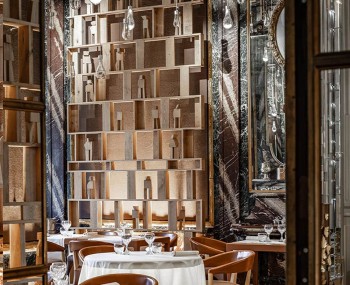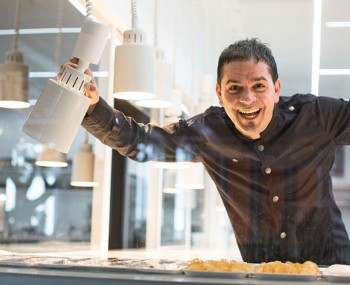St. Hubertus was a great restaurant, but Atelier Moessmer is on another level: the "Cook the Mountain" philosophy is applied to dishes in a more impactful, profound, and textural manner. A climb to the peak through the taste of the seasons: a "return to origins" for Norbert Niederkofler.
"Most eagerly anticipated restaurant opening in Italy," some called the opening of Atelier Moessmer back in July. In food world, it was quite a big news, veteran Alto Adige chef Norbert Niederkofler leaving St. Hubertus, the restaurant he led to 3 Michelin stars with his "Cook the Mountain" philosophy.

A bold move back in the days when fine dining was still somewhat associated with classic high-end style, with caviar and lobster and foie gras and other imported luxury ingredients coming from the other end of the world. Back then, when the term “sustainability” still wasn’t a trending topic. And definitely before it became the most used and abused term in modern gastronomy.
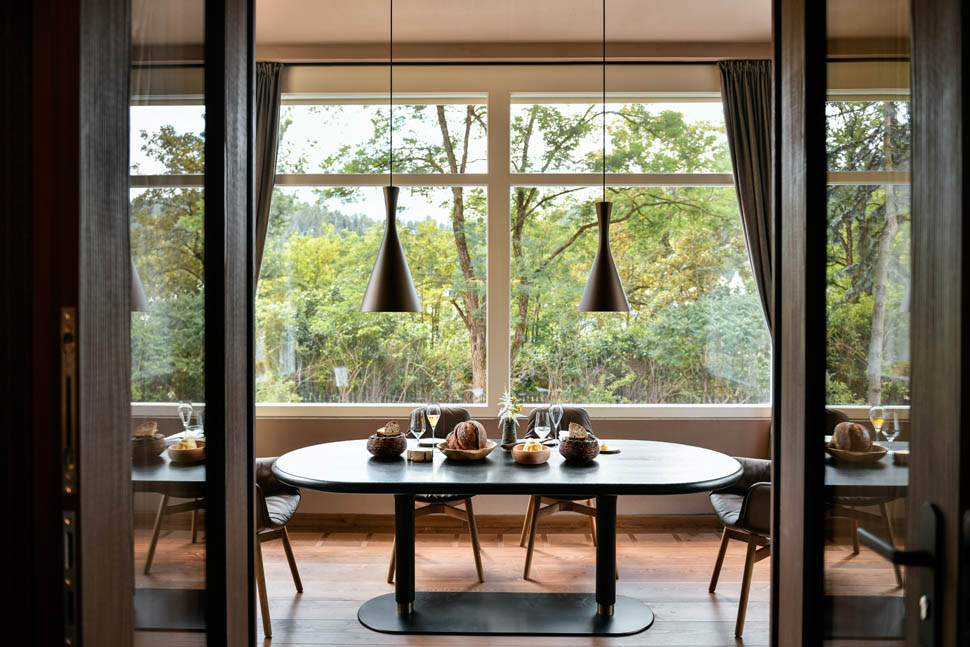
Niederkofler defied the odds, the sceptics and, let’s be honest here, probably even his own clientele given that St. Hubertus was set in the Rosa Alpina hotel where, no matter how many stars the establishment in question has, no matter how much it charges per night, a chef is always bound to be inherently limited and shoehorned-in.
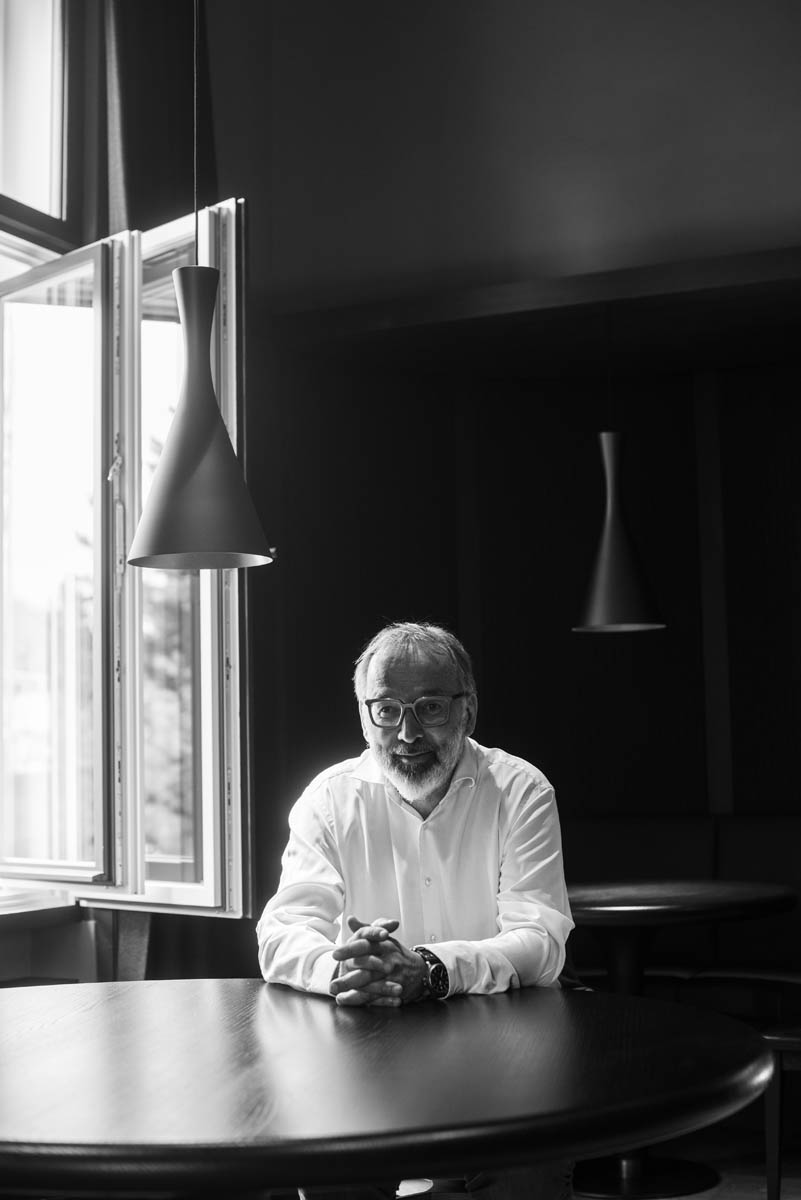
But at one point Niederkofler decided he was done with the limitations and expectations and, in the spirit of the great Dolomite mountaineers like Reinhold Messner who were pushing their limits and treading the most precipitous trails to the top, went in his very own direction. This was back in 2011 and at that point St. Hubertus had 2 stars. Gone were the wagyu, the tuna and the show-offy heaps of truffles and scoops of caviar. Gone were citrus and olive oil and seafood and tomatoes and chocolate and vanilla and anything not coming from ... well, the mountain.
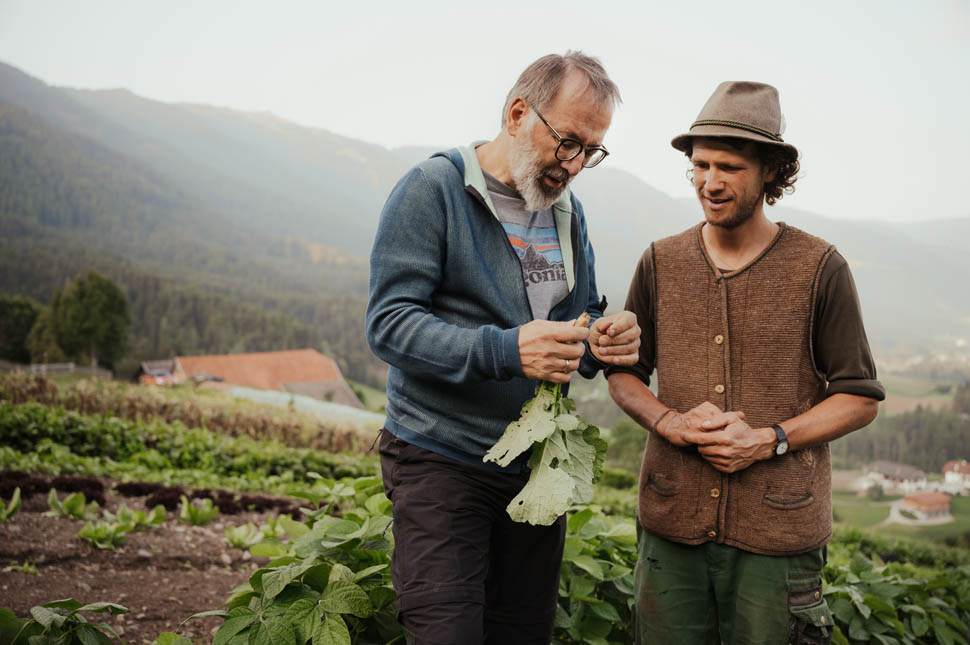
Fermented yellow plums, white currant juice and gooseberry juice replaced the acidity of lemons, fermented plum paste served as a mountain ketchup, pastry dusted with juniper powder instead of cinnamon. It worked. And in 2017, St. Hubertus was awarded the coveted 3 stars showing there’s no such thing as “established Michelin formula”. Or perhaps on occasion even Michelin recognizes the times they are a changin’ and all that.

But after almost 20 years Niederkofler left the hotel where he developed this concept and moved it, along with his entire team, to what is now called Atelier Moessmer, a beautiful historic villa from the 1800s, connected to the renowned Moessmer wool factory that produces the fabric for Chanel, Gucci, Prada and the likes.

The philosophy
It was all done so swiftly and so efficiently you could tell there were some serious stakes involved. A team who understood their assignment whether that assignment was to prove a point to the new owners of Rosa Alpina or just simply show what they were capable of doing freed of all the corporative ties.

Because, make no mistake, this is not one of those moves where a chef gives up the stars and the 50 Best red scarf to pursue a more casual concept. “To get some balance in life”, as they say. Nope. Quite the opposite. Atelier Moessmer already feels and operates like a well-oiled 3-star machine and the team is not even pretending with any false modesty to hide their ambitions. They probably have their alarms set for November 14th (the date of Italian Michelin stars reveal).
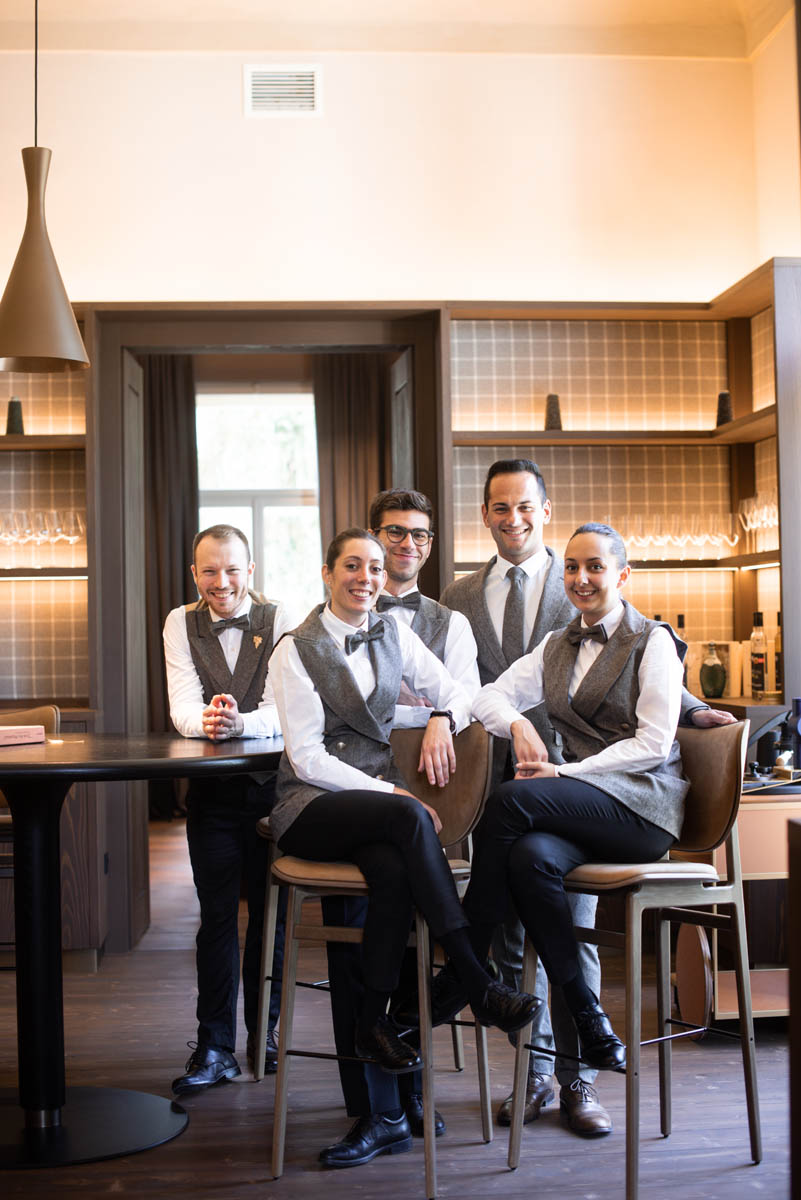
Credit for that goes to Niederkofler who, at 62, could easily just live comfortably off his side projects and consulting gigs, instead he threw himself into this with full commitment and drive of a chef half his age. He is also seasoned enough, smart enough and generous enough to give plenty of room to his team to shine, just like he did with his former head chef Michele Lazzarini (now excelling on his own at the outstanding Contrada Briconi). The talented Lazzarini (32) who played a big role in executing Niederkofler’s “Cook the Mountain” vision, left some big shoes to fill and for his replacement he turned to Mauro Siega (31) who has “driven” and “determined” written all over his face and is fully committed to the concept.


It definitely doesn’t hurt the very in-synch young team is led by maître d’ and head sommelier Lukas Gerges (32), hands down one of the best in his business. He is a sommelier who is able to read the room and switch from big labels to funky hazy wines depending on the table – and explaining the dishes and perhaps even checking in guests at the same time if needed.

St. Hubertus was a great restaurant, but Atelier Moessmer is next level. And the space and the interior design play a big role as well. "The architect blew all the budget," chuckles Norbert half annoyed, half gleeful - and you can tell this was some serious investment. The villa is listed as a historical site, so the architect duo Walter Angonese and Klaus Hellweger had to do quite a bit of tip-toeing when it came to refurbishment, but whatever the limitations were the end result is nothing short of spectacular.

Atelier Moessmer: the venue
The place is beautifully constructed, clean design, but also soft and soothing with details that pay homage to the next-door wool factory. There’s an aperitivo space, a digestivo space and a dimly lit dining room, but the heart of the restaurant is the Chef’s table area, a glass box attached to the building, brightly lit with natural light overlooking the kitchen action where fire plays a big role. No more sous-vide, it's closer to asador style with dishes like charred mountain salad or smoked trout, both highlights of the fall menu. “It’s back to the roots,” explains Niederkofler.

They make use of the whole animal and even though a lot of restaurants now claim this, in Atelier Moessmer they aren't playing it safe when it comes to different parts of the beast - offals are quite prominently displayed in the menu, be it in the deer blood sausage they serve on top of the creamy risotto with Jerusalem artichoke or beef tongue glazed with “mountain chimichurri” or chicken gizzards (“ventrigli”) in acid butter and chicken skin broth which is a bold move to pull in a fine dining restaurant. Dishes that are punching with flavors - and smell like surrounding woods and river banks and pine cones and Dolomite shrubs and apple orchards.

As Niederkofler and Siega explain, the Cook the Mountain concept has in no way been diluted down in this new place, if anything, they are able to implement it even more vigorously given they are now able to create a menu for every season, something they couldn’t do back in St. Hubertus.

They work closely with producers and farmers, around 50 of them, spread throughout the wider area, with no middle men involved. Because they refuse to use produce from the greenhouses they work vertically and horizontally, starting with a Biohof Oberhaus farm 1.000 meters above Brunico then moving to growers all the way south to Bolzano once the first snow covers the lush high mountain vegetable plots.

And the winter season is no less exciting. Atelier Moessmer’s pantry looks and feels like a Cook the mountain chefs’ playground – pickled radishes and onions and beans and fennel bulbs, lacto-fermented carrots and fermented cloves of garlic, pickled spruce tips and tiny pine cones with dark red carcasses of game and wreaths of pink sausages hanging in the middle of the cooler room in all its naturalistic glory.

The dishes
This might not be the right address if you are vegetarian though; proteins are prominently featured throughout the menu, the shimmering bright red beetroot tartlet laced with air thin slices of duck speck setting the tone. Cannolo with potato, mushroom and cheese, char tacos and veal “pastin” wrap up the quartet of starting bites served alongside champagne in the aperitivo room before you are being shown to your seat at the Chef’s table with the kitchen lowered just slightly from the seating area so that the chefs don’t look down at you. A detail you perhaps wouldn’t have even noticed if Norbert hadn’t pointed it out.


The cuisine of Alto Adige isn’t exactly known to be a light one – here, when you walk into a casual place or a mountain hut, they feed you. There’s charcuterie and graukäse (an acquired taste for non-mountain folk) and goulash and dumplings and every shape and form of fried dough you can imagine. Atelier Moessmer is not doing a refined version of that, but the dishes are quite hearty and not shy when it comes to punching in flavor – perhaps something Siega got a taste for when he was working in Copenhagen.

Take the mountain salad for example that starts the meal, it’s a flavor bomb of charred vegetables, served with fluffy brioche on the side. The flakes of smoked trout that follows are laced with pickled buds and herbs and served with smoked trout waste sauce, and the sourdough bread baked using only the local grains comes with a bucket-load of butter that makes you really wish you picked a looser-waist outfit for the occasion. After the equally overgenerous portion of the risotto with black pudding they throw in the only dish that feels a bit like it’s been taken from an entirely different story, an odd-ball in the mix, both in its very classic presentation and the style – and that’s precisely because it is. It’s beetroot gnocchi, one of the very few iconic St. Hubertus they kept on the menu, perhaps as a nod to the long road they have walked to come to this point.

It is however one of the very few non-protein based dishes because what follows is a hard-hitting trio of gizzards, beef tongue and last but not least, gorgeously presented deer in three acts (deer loin, deer skewer and cabbage raviolo with reduced deer sauce) that you cut with some hard-core knife hardware welded by Siega’s father.

The fall dessert menu is very much apple-based making use of the surrounding orchards with baked apple served with apple concoction spiked with apple schnapps, followed by a gigantic Linzer cookie dusted with juniper powder and, for the grand finale, obscenely decadent tarte tatin, another St. Hubertus takeaway.

The only one thing the whole "Cook the Mountain" concept has going against it is that, well, you have to head to the mountains. There’s no beating around the bush, Brunico isn’t exactly the center of the Earth and it’s quite a bit out of the way. Then again, isn’t the definition of a 3-starred restaurant that it’s worth the journey?

Address
Atelier Moessmer
Via Walther von der Vogelweide, 17, 39031 Brunico BZ
Tel: +39 0474 646629





